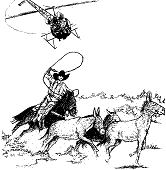Vertebrate Pest Conference: Proceedings

Vertebrate Pest Conference Proceedings: 11th (1984)
Date of this Version
March 1984
Document Type
Article
Abstract
In 1961, Congress initiated the Accelerated Wetland Acquisition Program, which has resulted in purchase of about 2,450 scattered small Waterfowl Production Area (WPA) management units in the Prairie Pothole Region of Minnesota, Montana, North Dakota, and South Dakota. The WPAs are administered by the U.S. Fish and Wildlife Service (FWS); increased duck production is a major management objective. Duck recruitment rates in much of the four-state area are very low because of high predation, especially on nests. Principal predators responsible for the predation are six mammalian carnivores and one rodent. The actions of predators on WPAs, especially in central and eastern portions of the area, render many areas ineffectual for duck production. A survey of managers of the 22 Wetland Management Districts in the area revealed that little predator management for increased duck production is being conducted on WPAs and that few data are available from which to evaluate effectiveness of methods being used. Public trapping and hunting are permitted on nearly all WPAs. Habitat management is widely practiced but has had limited impact on predation rates. Other predator management activities include limited or experimental use of selective predator control, nesting structures, artificial islands, and electric fences. There is growing demand for cost-effective and acceptable methods to reduce predation, but the number, size, and arrangement of WPAs pose difficult management problems.

